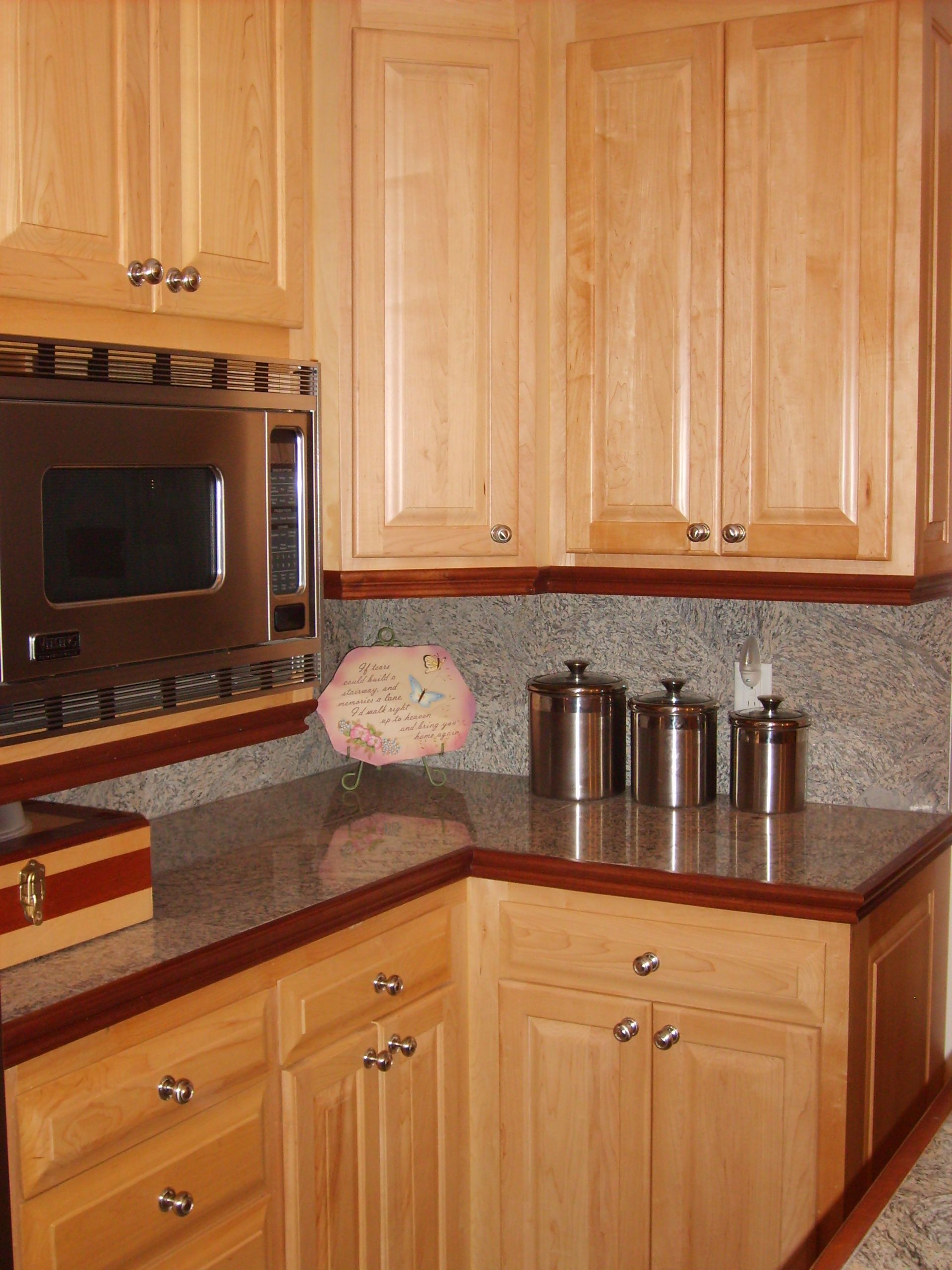Welcome to your ultimate guide to light wood kitchen cabinets! As homeowners increasingly embrace natural elements, light wood cabinets have become a favorite for creating warm and inviting kitchens. This comprehensive guide explores everything from the latest trends and design inspiration to choosing the right wood species, finishes, and hardware. Let’s transform your kitchen into a space you’ll love!
Unveiling the Allure of Light Wood Cabinets
Light wood cabinets are having a major design moment, bringing a warm, inviting atmosphere to the heart of the home. Their versatility shines through in various styles, from cozy farmhouse kitchens to sleek, modern spaces. Thinking about brightening up your kitchen? Let’s explore the possibilities!
One of the greatest advantages of light wood cabinets is their ability to enhance natural light, making any space feel open and airy. This is particularly beneficial in smaller kitchens, creating the illusion of more square footage. Imagine the sunlight dancing across your cabinets, breathing life into your kitchen.
Light wood cabinets are incredibly adaptable. Picture a rustic farmhouse kitchen with white countertops and warm brass hardware—light wood cabinets add to the cozy ambiance. Now envision a sleek, modern kitchen with clean lines, black hardware, and stainless steel appliances—the same light wood cabinets seamlessly integrate, offering a touch of warmth. They can even create a coastal chic vibe when paired with breezy blues and whites. The design possibilities are truly endless!
Choosing the Perfect Light Wood
Selecting the right light wood involves considering various factors, from the species and finish to your budget and lifestyle. Let’s delve deeper into these considerations.
Wood Species
Oak, known for its durability and beautiful grain, stands as a classic choice. Maple offers a smoother, more uniform look, while cherry brings a warm, reddish hue. Each wood species possesses unique characteristics, allowing you to select the perfect match for your style. For example, light oak has seen a resurgence in popularity, adding a touch of timeless elegance.
Finishes
From showcasing the natural wood grain to adding a subtle hint of color with a light stain, the finish dramatically impacts the final look. Painted finishes, like the popular “Pottery Barn” or “Restoration Hardware” styles, offer even more flexibility in color and design. These often incorporate lightly distressed techniques, lending a lived-in, vintage charm.
Maintenance
Caring for your light wood cabinets is easier than you might think. Regular cleaning with mild soap and water helps prevent stains and discoloration. Using soft cloths avoids scratches, and it’s always best to avoid harsh chemicals that could damage the finish. Some woods, like cherry, might require specialized care. Interestingly, cherry cabinets can be lightened or darkened without sanding or painting using specific products. More information on how to achieve this transformation can be found in the [https://www.wavesold.com/light-wood-flooring] flooring section.
Styling Your Light Wood Kitchen
Maximize the beauty of your light wood cabinets with these expert design tips:
- Embrace Natural Light: Position your cabinets to capture the most sunlight, amplifying their reflective qualities.
- Create Contrast: Pair light wood cabinets with darker countertops, such as black granite or quartz, for a stunning visual impact.
- Hardware Matters: Brass or copper hardware adds warmth, while black or nickel creates a modern edge. For creative storage solutions, check out our guide on [https://www.wavesold.com/library-ladders].
- Accessorize with Personality: Open shelving, stylish pendant lighting, and greenery can add character and complete the look.
Are Light Wood Cabinets Still in Style?
Light wood cabinets aren’t just a trend—they’re a timeless choice. Their enduring appeal stems from their warmth, versatility, and ability to complement various design styles. From rustic farmhouse to sleek modern, light wood cabinets elevate any kitchen.
Their light-reflecting properties brighten a room, making even smaller kitchens feel airy and spacious. This is a game-changer in kitchens with limited natural light.
Light wood cabinets act as a neutral backdrop, harmonizing with virtually any color scheme. Whether your dream kitchen features crisp white countertops, warm beige backsplashes, or vibrant teal accents, light wood cabinets will likely complement them beautifully. This adaptability allows you to personalize your kitchen and easily update accessories without clashing with your cabinets.
Contrary to popular belief, lighter cabinets often hide everyday dirt and grime better than darker counterparts. While regular cleaning is essential, they probably won’t require constant wiping. With a little care, they’ll maintain their beauty for years to come.
Beyond aesthetics and practicality, light wood cabinets can also be a sustainable choice. Many manufacturers now prioritize sustainably sourced wood, contributing to responsible forest management.
Here’s a summary of the benefits:
| Feature | Benefit |
|---|---|
| Brightens Spaces | Makes rooms feel larger and more open, especially helpful in smaller kitchens. |
| Versatile Style | Complements a wide range of design aesthetics, from traditional to modern. |
| Neutral Backdrop | Provides a flexible base for various color palettes and design elements. |
| Relatively Low-Maintenance | Doesn’t show dirt and grime as readily as darker cabinets. |
| Sustainable Options | Available in sustainably harvested wood, making it an eco-friendly choice. |
While specific styles within the “light wood” category may fluctuate in popularity, the overall appeal of light wood remains constant. If you’re considering light wood cabinets, rest assured that they likely offer a timeless look adaptable to evolving trends and personal preferences.
Exploring the Lightest Wood Options
Choosing the “lightest” wood isn’t always straightforward. Several factors influence the perceived lightness, including the wood species, stain, grain, and even the kitchen’s lighting.
Naturally light woods like alder, maple, and white oak provide a beautiful starting point. However, darker woods like cherry or walnut can be stained to achieve a lighter shade.
The wood grain also plays a role. A tight, subtle grain can make the wood appear lighter and more uniform, while a more open grain creates contrast and may make it seem darker.
Durability is key, especially in a bustling kitchen. Harder woods like maple and oak are more resistant to scratches and dents than softer woods like pine.
Budget is another important consideration. Some wood species are more expensive due to availability and demand. Cabinet construction also influences the cost; solid wood cabinets are generally the priciest, while those made with veneers or composite materials offer budget-friendly alternatives.
Here’s a table summarizing popular choices:
| Wood Species | Natural Color | Grain Pattern | Durability | Relative Cost |
|---|---|---|---|---|
| Alder | Light brown, reddish tints | Fine, uniform | Moderate | Mid-range |
| Maple | Creamy white to light brown | Fine, sometimes with “birdseye” or “curly” figures | Hard, durable | Mid-range to high |
| White Oak | Light brown, grayish tints | Open, prominent | Very durable | High |
| Cherry | Reddish brown | Fine, straight | Hard, durable | High |
| Walnut | Dark brown | Straight, sometimes with interesting figures | Hard, durable | High |
Remember, even within the same species, color can vary. Always view actual samples before making a decision. Consulting a kitchen designer or cabinet maker can provide valuable insights and guide you toward the perfect choice.
Countertop Pairings for Light Wood Cabinets
The right countertop can elevate your light wood kitchen. Consider your lifestyle, budget, and desired aesthetic when making this decision.
Quartz countertops offer incredible versatility, durability, and low maintenance. Their wide range of colors and patterns complements various kitchen styles.
Marble exudes luxury and timeless elegance, though it requires more care and is susceptible to scratches and heat. New sealant technologies may offer increased protection in the future.
Granite is another durable and heat-resistant option with various natural colors and patterns. While some may find granite’s appearance busy, it ultimately depends on the specific slab and its interaction with other kitchen elements.
Concrete countertops provide a unique, customizable surface ideal for industrial or modern kitchens. Once sealed, they are relatively resistant to heat and stains, though some experts suggest they require more upkeep than other options.
Stainless steel countertops offer a sleek, hygienic, and heat-resistant surface, perfect for contemporary kitchens. While prone to scratches, they create a clean, professional look.
Here’s a comparison table:
| Countertop Material | Pros | Cons |
|---|---|---|
| Quartz | Durable, low-maintenance, wide range of colors & patterns | Can be more expensive than some other options |
| Marble | Luxurious, elegant, timeless | Requires more care, prone to scratches & heat |
| Granite | Durable, heat-resistant, variety of colors & patterns | Can look busy, depending on the slab |
| Concrete | Customizable, industrial look, heat & stain-resistant (sealed) | May require more maintenance than some other options |
| Stainless Steel | Sleek, hygienic, heat-resistant | Prone to scratches, can feel cold to the touch |
Ultimately, the best countertop complements your lifestyle and desired aesthetic. Take your time, explore the options, and find the perfect fit for your light wood kitchen.
- Blow Up Batting Cages: Your Complete Guide (2024) - April 6, 2025
- Best Blinds for Lounge Rooms: Your Ultimate Guide - April 6, 2025
- The Best Battery Picture Lamps for Effortless Artwork Illumination - April 1, 2025










